









LaxHilltakenbyDaveinthe1980's
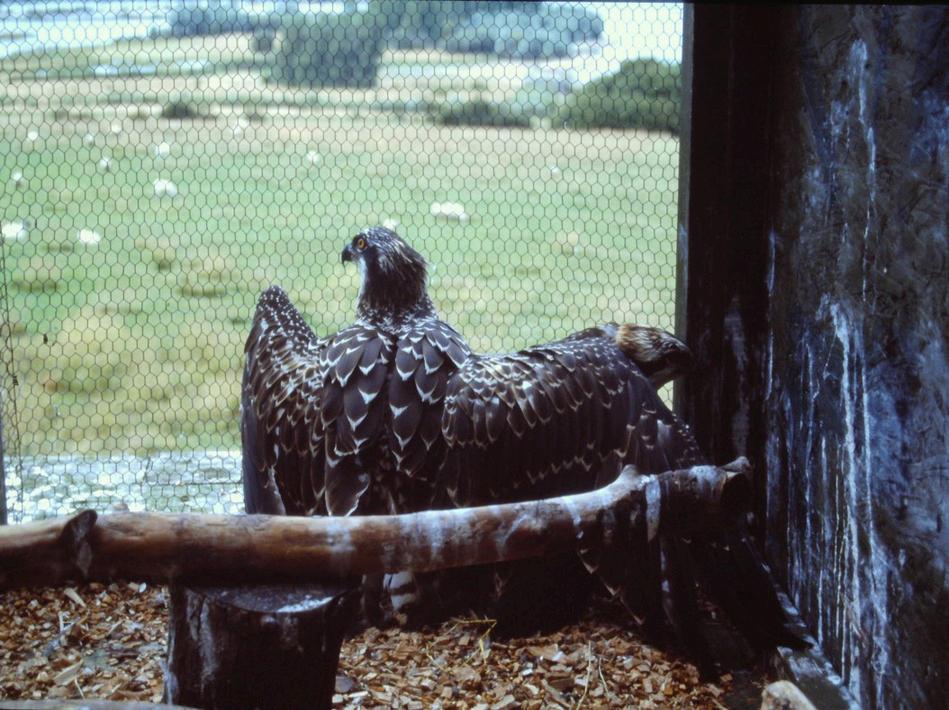

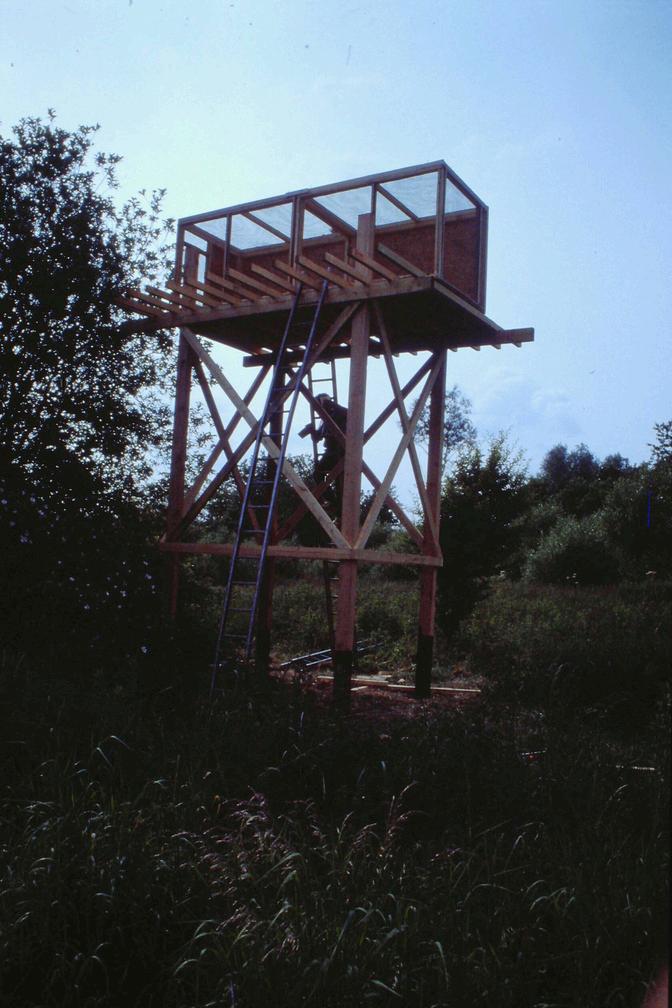


In each issue we will feature a 'Spotlight' on one of our volunteers.
In this issue we celebrate Dave Needham, who this year will have been volunteering with the Trust for 50 years!
Dave shares his experiences over the years, and also some amazing pictures he has taken.
I have always been interested in wildlife and birds. In 1973 I joined the Rutland Natural History Society, and on a fieldtrip to Rutland Water I met Tim Appleton. In 1974 he asked me if I would build hides. I drew up plans and cutting lists for the timber for the hides.
The first hide we built was Shoveler at lagoon 3, and then Mallard at lagoon 1, and Redshank at lagoon 2. Goldeneye was built at Gorse close overlooking the south arm 1. The first disabled hide was Plover, built on the site where the Birdwatching Centre is at lagoon 1.
I was involved with the Osprey Project with the building of the holding cages and monitoring the birds with my late wife Carol. I was also involved with the British Birdwatching Fair for 33 years and 2 years before the BWF with the Bird Bonanza.
When the Birdwatching Centre was built, Tim asked me to fit the centre out with the counter, floor, wall units, and the upstairs office.
I was a Wetland Bird Survey (WeBS) counter for 30 years and I was doing jobs at the Lyndon Centre and also around the Nature Reserve. When I became self-employed I had less time to do work on the Reserve, and on my retirement spent a lot of my time at Ketton Quarry, as my wife became ill. I was recording the wildlife on reserve, but still doing the odd jobs at Rutland Water.
On the passing of my wife, I joined John Bristow’s work party for a year, then it was taken over by Sarah and Juliette. I have made a lot of new friends, and have learnt a lot on reserve management. The work and the people I am with now have helped me with my loss, and that I am helping the Trust with its battle to save the wildlife and the reserves.






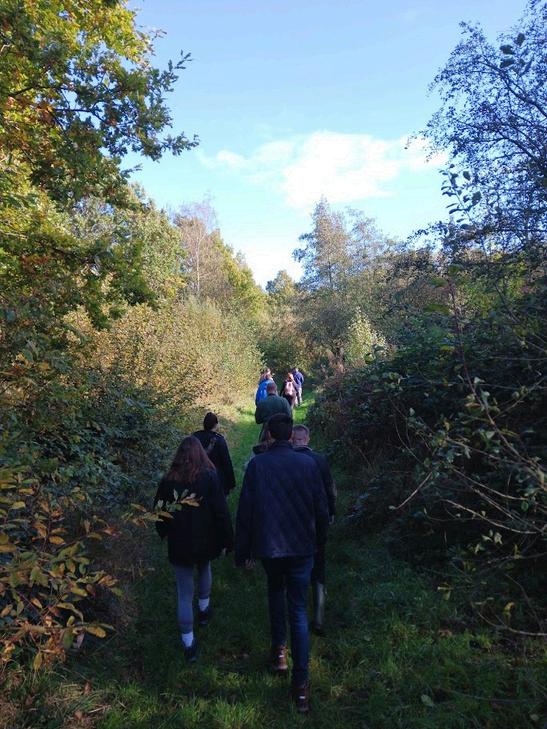
The Big Wild Walk is The Wildlife Trusts' annual fundraising challenge!
Challenge yourself to join people all across the country by exploring the nature on your doorstep. Walk 30km between 21st October and 3rd November as you fundraise to protect the wildlife you love.
Whether you want to tackle one big hike or take it at your own walking pace over the two weeks, the only competition is against yourself. And if you prefer to conquer step counts from the comfort of your living room, don’t worry because we’ll bring the wildlife to you!
Whatever you choose to do, you’ll also experience the benefits to health and wellbeing that comes from connecting with nature. Sign up and start fundraising today: https://www.lrwt.org.uk/bigwild-walk-2024
Join us on the Lyndon Nature Reserve for one of our exciting events, suitable for all levels of wildlife interest. This Autumn and Winter we will be hosting a number of events, perfect for anyone looking to get connected with nature.
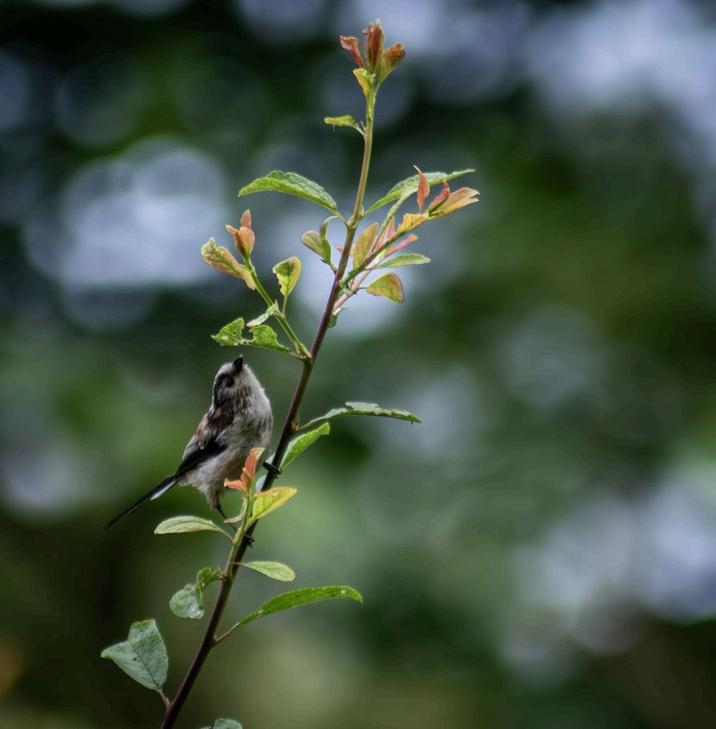
Just some of the events you can now book onto
Winter Wader Walks - Up-close views of a variety of wading bird species that thrive in this winter haven
Beginner Nature Walk - Perfect for anyone new to nature exploration or simply looking to enjoy the outdoors
Birda Bird Walks: Bird Logging - Bring your binoculars and smartphones as we’ll be logging our sightings on the Birda app—a great way to track and share your birdwatching discoveries
Family Beginner Nature Walk - Whether you’re curious about spotting rare birds or simply want to enjoy a peaceful morning with your family in nature, this walk offers something for everyone
We’d love for you to join us at any of these events, and do please also share them with anyone else who you think might be interested. You can find all of our events on our website, and the Lyndon specific events can also be found here: https://www.lrwt.org.uk/lyndon-nature-reserve-

David Attenborough - Rothschild Medal
Sir David Attenborough was awarded the Rothschild medal in recognition of the extraordinary inspiration, leadership and support he has given to The Wildlife Trusts federation of charities over the past 60 years.
As President of Leicestershire and Rutland Wildlife Trust, Sir David’s support to us has been invaluable. We have proudly welcomed him on many occasions including, the opening of our Lyndon Visitor Centre and the Volunteer Training Centre at Rutland Water, the opening of Cossington Meadows Nature Reserve, as well as being the first person to put a spade in the ground at Rutland Water Nature Reserve, now an internationally recognised Site of Special Scientific interest (SSSI), Special Protection Area (SPA) and a Ramsar Wetland of International Importance.
All of us at Leicestershire and Rutland Wildlife Trust would like to express our heartfelt gratitude and congratulations to Sir David Attenborough. Over the decades his passion for the natural world





Sophia Attwood-Clarke - Reserves Officer
Maintaining the infrastructure on the reserves is a bit like painting the forth bridge at the best of times, but what is on mine all seems to have given up at once! We have replaced a set of steps, the handrail and side supports of another, and several of the posts in the safety fencing at Dimminsdale. At Croft Pasture, we rebuilt a section of post and rail, two sections of stock fencing and a stile, with several strainers, a gate post and another substantial section of post and rail to go. At Narborough Bog, I lost the safety fence from around the wet woodland and found it within it, transformed into something of a tree house. We donned waders to replace the cattle drink in the river, and Andy and I replaced two gate posts at the entrance with the distraction help of Toby. In recent storms, the cows escaped the far two meadows when a cracked willow took the fence down with it.
It should have been the season for mowing and raking and species control rather than fencing, but we have managed to fit that in too! The rough grassland, track and ringing rides at Kelham Bridge have been mowed and raked off and the ride system and green path cut and cleared at Fox Wood. Creeping thistle, ragwort, thorn, bracken and Balsam have been removed from Croft Pasture, Dimminsdale and Narborough Bog. I have been chasing my tail to keep access open and the paths tame across all my reserves, but fortunately I have had the A team with me – that’s you lot!
Thank you!

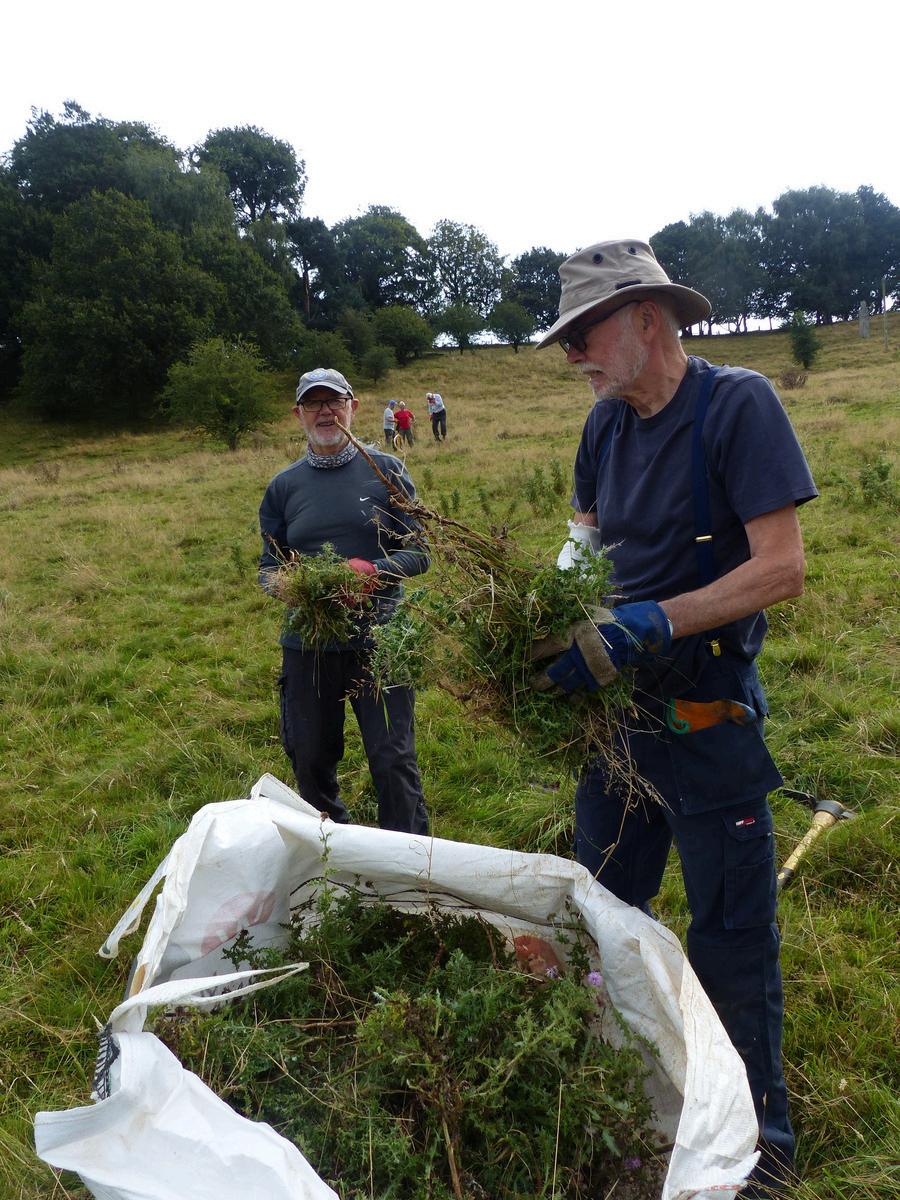




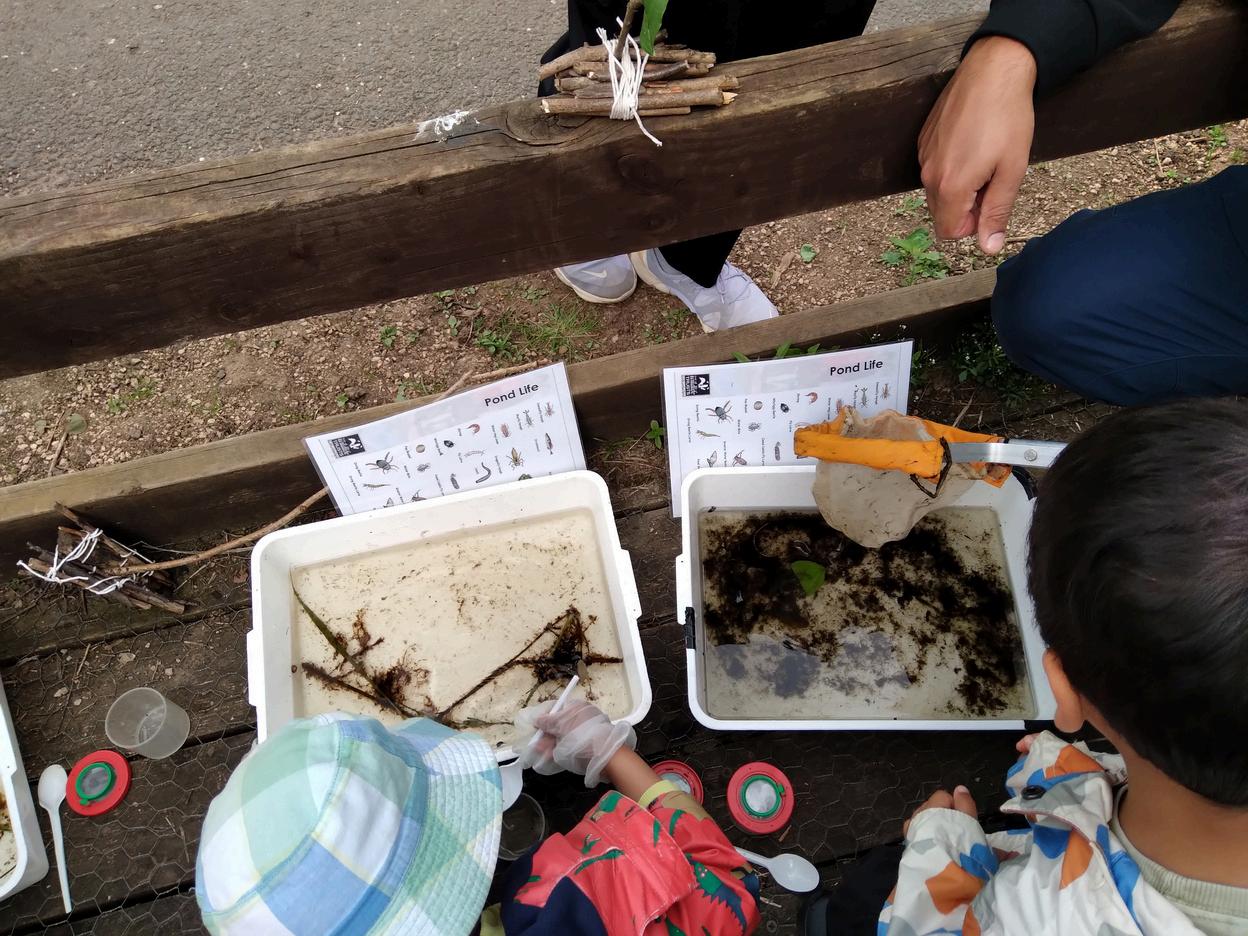
Rachel Ibbotson - Education Officer
Over the spring and summer months Education Volunteers have been supporting Wild Tots, Forest School and Wild Play events.
Children at Whitehall Primary School have been outside weekly using their school grounds for Forest School.
17 families have been visiting Lucas Marsh Nature Reserve weekly in term time with their under 5s to explore and discover this lovely little reserve and the wildlife.
The half term and summer holidays saw 90 children and their families learning more about wildlife at Burbage Common with our Wild Play sessions in partnership with Hinckley and Bosworth Borough Council. From minibeast hunting, pond dipping to wildlife inspired art and den building. Many families took part in 2 or more sessions so are well on their way to completing a Wildlife Watch Award.

Education also supported the Green and Wild Family event at the Green Place in Sileby with children’s activities including pond dipping tasters. A wonderful day with many children’s first-time seeing frogs, newt larvae, diving beetle and other pond invertebrates.
Rachel has also been working on promoting the Wildlife Watch Hedgehog Awards to more children by making them accessible online. All children aged 4 – 12 in the city and 2 counties can now take part in the Level 1 award via our website. Level 2 and 3 are open to LRWT child members.
Want to get the children in your lives involved go to:
https://www.lrwt.org.uk/hedgehog-award-level-1
Thanks to Elaine, Gerry and Sue for your continued support with our education work.


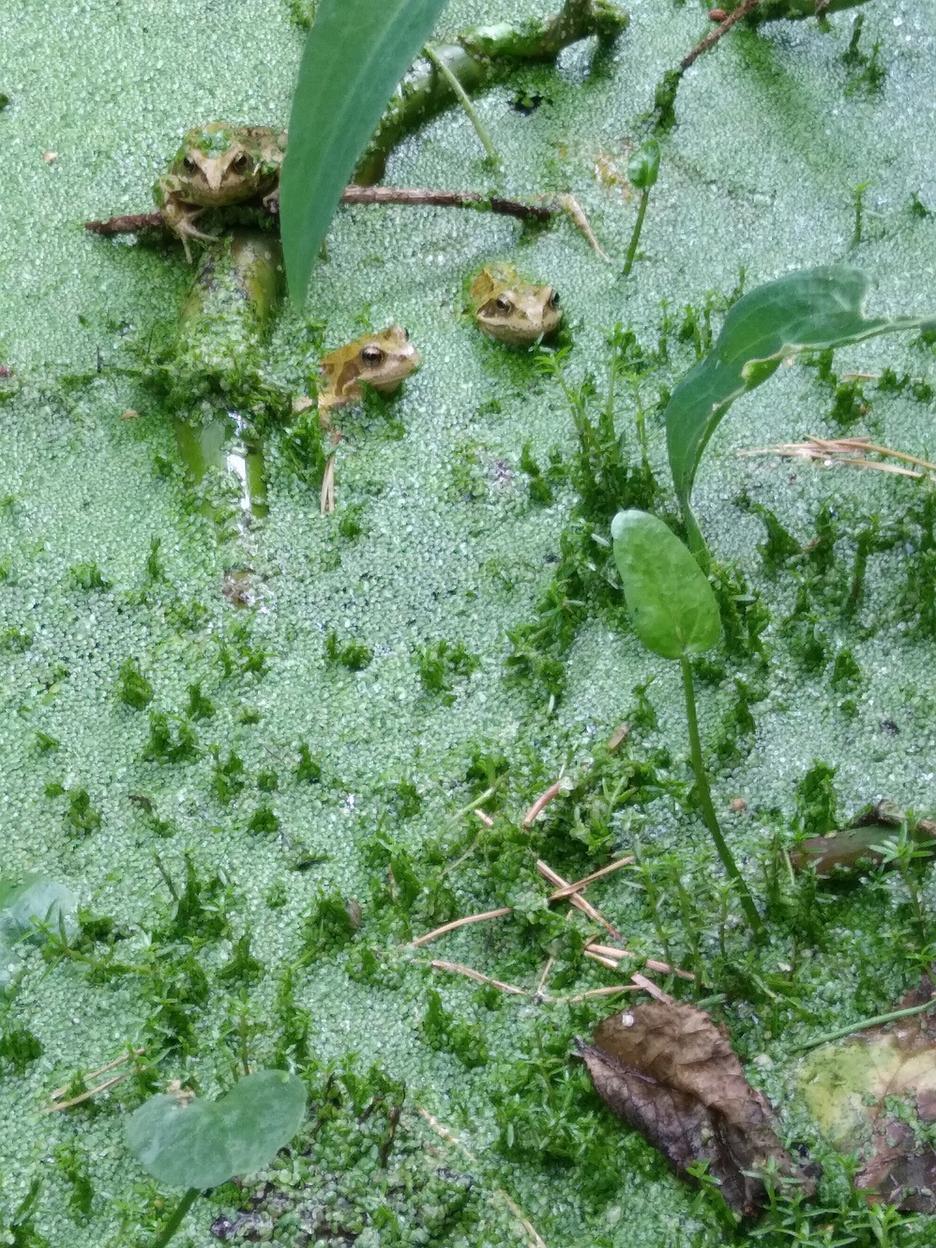



Beth Fox - Assistant Species and Recording Officer
Hi all, I’m Beth, those at Rutland Water already know me as I was one of the Trainee Reserve Officers here last year, but in April I moved into the position of Assistant Species and Recording Officer. My role is assisting in the survey and monitoring on the reserve at Rutland Water and particularly in helping with the data and analysis of the various surveys, which I am really enjoying being a part of, and it has been great to meet and work alongside all of the survey volunteers.
A large part of species and monitoring throughout the summer months is assessing the water quality at Rutland Water through aquatic invertebrate sampling. We use the ‘BMWP method’ which uses aquatic invertebrates as biological indicators with varying species scoring between one and ten based on their tolerance to pollution, or low oxygen levels, in the water bodies.
The need for this monitoring grew out of concern for the effects of pollution in Lagoon 3, to see how aquatic insect populations, or a lack of, could be having a negative impact on overwintering waterbirds and thus affecting the status of the SSSI. By observing the resident aquatic invertebrates, instead of chemical testing, we are able to see the effects of pollution over time, and also allows us to detect short discharges of pollution that would otherwise be missed through chemical sampling.

Samples are taken at a specific location over three minutes using a pond net, and then taken back to the side where all species are identified to family level and noted on a score sheet. By only identifying to family level means that this is an easy method to learn and is soon picked up within a few samples. Any surface dwellers that have been observed in the area such as Pond Skaters or Whirligig Beetles (image 1) are also noted down. Higher scoring species are those from the river fly families, the Mayflies, Caddisflies and Stoneflies, which are sensitive to changes in water quality, and lower scoring species include fly larvae, leeches and snails, which are more tolerant to pollution or low oxygen in the water.

Scores are then totalled to give us the ‘BMWP score’, which we can then use to build up a picture of the biological condition of that particular body of water. In table 1, you can see the framework which we use to interpret the scores. Each lagoon is sampled multiple times around different points to ensure we are covering the whole area.
This summer, with a group of volunteers, 45 samples have been taken (as of the start of September) from various points around the lagoons and ponds on the reserve. This year, we have had some of the highest scores we have seen since starting this monitoring, including areas such as Lagoon 3 which has historically been known to be of poorer water quality. We do not yet know why this is, but we have thoughts that the higher levels of rainfall this year have led to a flushing effect, cleaning out some of these poorer areas.
The highest scoring sample this year was taken from Lagoon 6, with a BMWP score of 137 showing the favourable condition of this lagoon. Twentyeight different family groups were recorded, of 13 different orders, including two caddisfly families, five beetle families and seven bug families. Highlights from this sample was the speedy Mesovelidae, a Pondweed Bug (image 2) which was a first for the reserve. A different sample taken on the same day at Lagoon 6 also found the Hydrometridae, a Water Measurer (image 3), so named for the measuring-stick like markings that run down its body, also a first for the reserve this year.

The lowest scoring sample was from Lagoon 3, with a BMWP score of 43 meaning it is moderately impacted, taken from the far end on the open water side of the reedbed. This sample had just 12 different family groups of eight different orders, and had no caddisflies, no beetles, and just two bug families, showing just how stark the invertebrate diversity is in this part of Lagoon 3 compared to the above sample on Lagoon 6. Abundance of invertebrates are not taken into consideration in the BMWP method, however, we rate the abundances for our own records. This sample contained high amounts of snails (over 100 Pond Snails), Pea Mussels (between 51 and 100), and Water Hoglouse (between 26 and 50); all of which are lower scoring species more tolerant to lower oxygen levels in the water.

This is not the lowest score that we have had in Lagoon 3 compared to previous years (the lowest has been 17), and we have also had higher scores this year in different sample locations around Lagoon 3. The highest BMWP score we have had so far this year in Lagoon 3 is 100 (clean but slightly impacted), so shows the need for multiple samples to get a balanced overview of the water body’s condition. This sample was taken from the channel behind the reedbeds, where reedbeds are good at filtering out pollutants in the water through increasing the oxygen levels. In this area we have found both Damselfly and Dragonfly nymphs, both high scoring invertebrates which are not generally found in the more open water areas of Lagoon 3.
Other interesting places that have been sampled this year are the ponds, and in particular one historic pond we have sampled this year appears on maps predating the 1820s. With a score of 99 it is in the clean, but slightly impacted category, but what stands out in this sample is the abundance of higher scoring invertebrates. Nearly 50 Aeshnidae, or Hawker Dragonfly nymphs were recorded, along with a similar number of Coenagrionidae, the blue/black Damselfly nymphs. Also found were between 11-25 Dytiscidae, the diving beetles, including the Great Diving Beetle (image 4). This large beetle grows to three centimetres long and is a ferocious predator; its larvae can give you quite a bite!
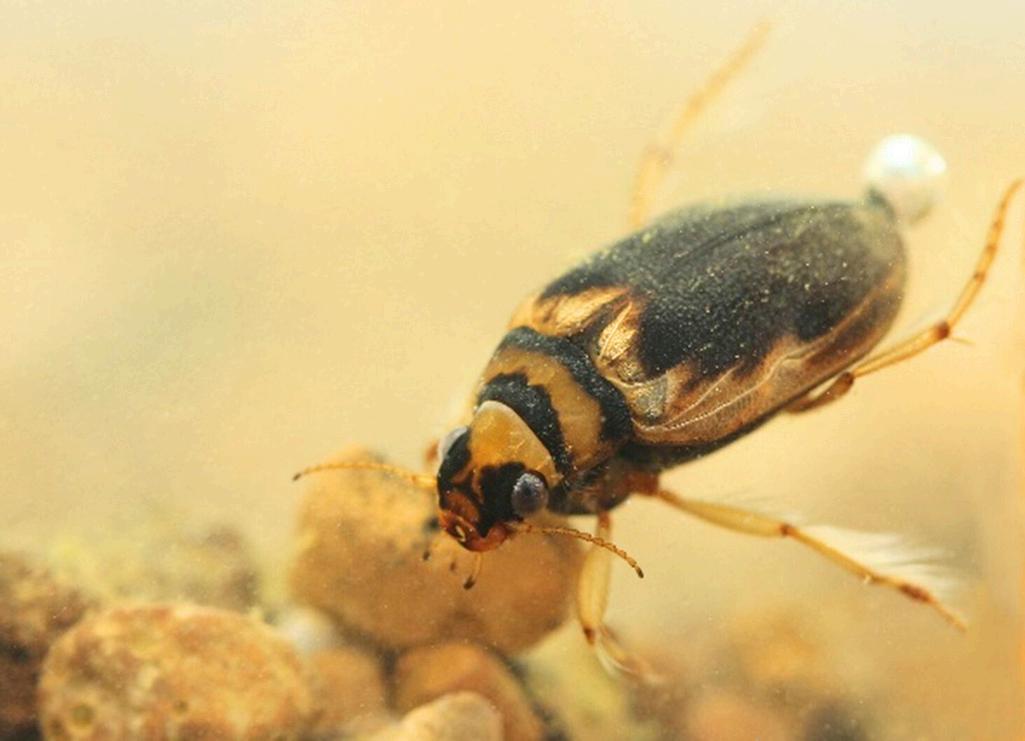
Once all of the samples have been taken for the year, the data will be collated and examined to give us the full picture of the water quality in the lagoons and ponds across the reserve. We can then compare the results to previous years, allowing us to clearly monitor any changes in the biological conditions of the water bodies and to further see if any effects are having any impact on overwintering waterbirds. A special thanks goes out to all the volunteers involved in helping us with this monitoring.
Interpretation
Heavily
Moderately impacted
Clean but slightly impacted
Unpolluted, unimpacted
Table 1. Interpretation of BMWP scores

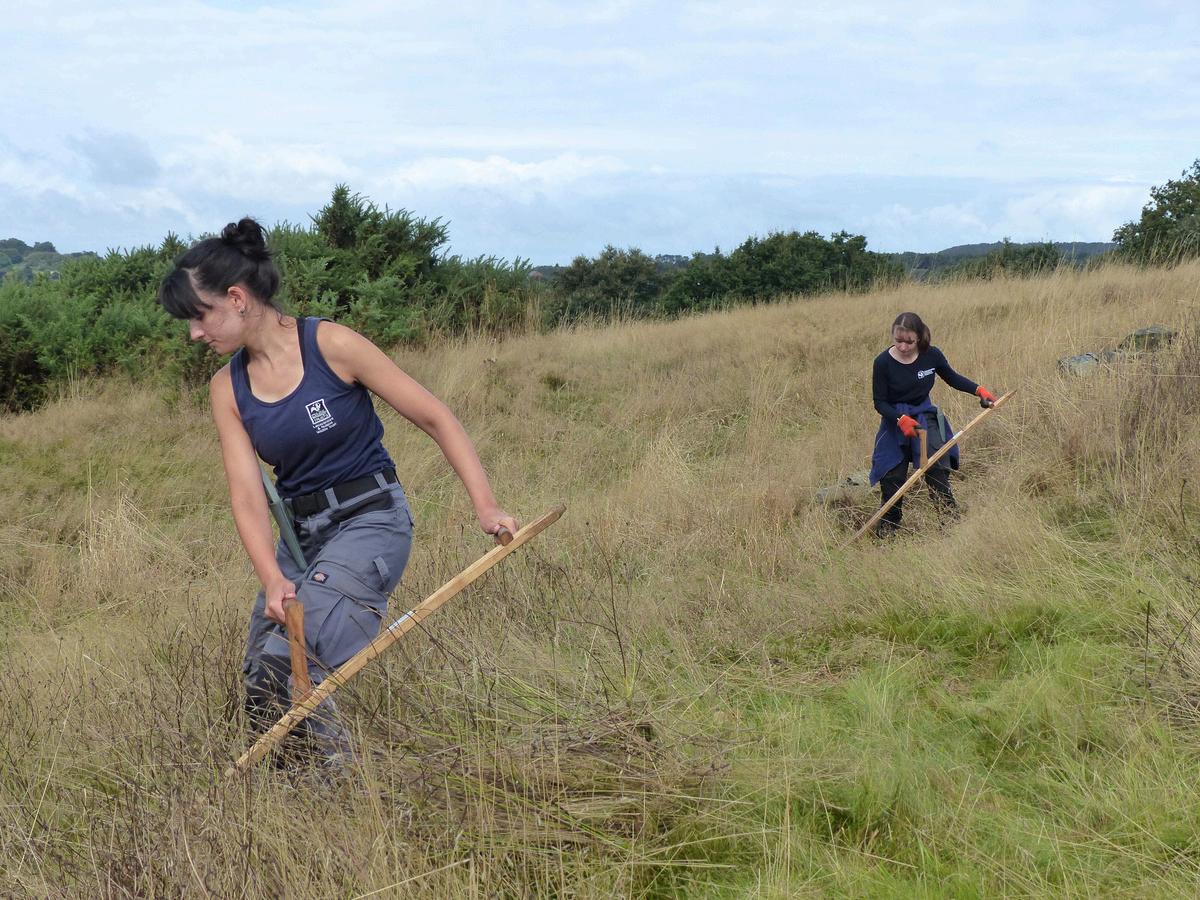
Alex Moore - Trainee Reserve Officer, Leicester
Hello everyone,
I’m Alex and I’ve recently been appointed as the new Trainee Reserves Officer with the Western reserves team. I’ve been in post for a couple of months and have been busy joining the weekly volunteer sessions at the reserves and taking part in training courses.

I’ve been getting involved with bracken clearing, fencing and scything amongst many other tasks, and have thoroughly enjoyed every minute so far! I’m excited to have this opportunity to learn the skills needed for a future career in conservation, meet the volunteers and visit the reserves. Everyone’s been very welcoming and I’m really looking forward to getting involved with more projects during my time with the team.

Sam Pitt Miller - Trainee Reserve Officer, Rutland
Hello, I’m Sam, one of the new Trainee Reserve Officers at Rutland Water. I’m from Leicestershire, and Rutland Water is the place that sparked my interest in nature as a child, so I’m thrilled to have the opportunity to spend a whole year here enjoying this fantastic reserve!
Last year I graduated with a degree in Conservation Biology and Ecology, which combined with the skills I will pick up as a TRO, will hopefully set me up well for a career in conservation. I’m really into species identification and recording, my main interest is birds, but I am slowly progressing along the taxa spectrum towards the smaller things and have been particularly enjoying going out botanizing this year. I’m sure I’m going to learn loads this year and really look forward to it. See you around!

Rutland
Hi, my name is Jill and I’m one of this year’s Trainee Reserve Officers. I grew up in Australia and moved to the UK nearly 11 years ago, but I still have an Aussie accent though! I’ve spent most of my working career behind a desk in various corporate roles, but I’ve always loved being outdoors and spend most of my holidays doing outdoor adventure and nature type stuff and conservation volunteering.
So last year I made the leap to change career, and I’ve spent the last 10 months with Lincolnshire Wildlife Trust as a residential volunteer at Far Ings NNR and Saltfleetby- Theddlethorpe Dunes NNR. I was also studying for a Level 2 Diploma in Conservation. I’ve now moved ‘next door’ to Rutland Water NR and I’m so excited to starting this traineeship with LRWT, meeting everyone and getting stuck into the role!

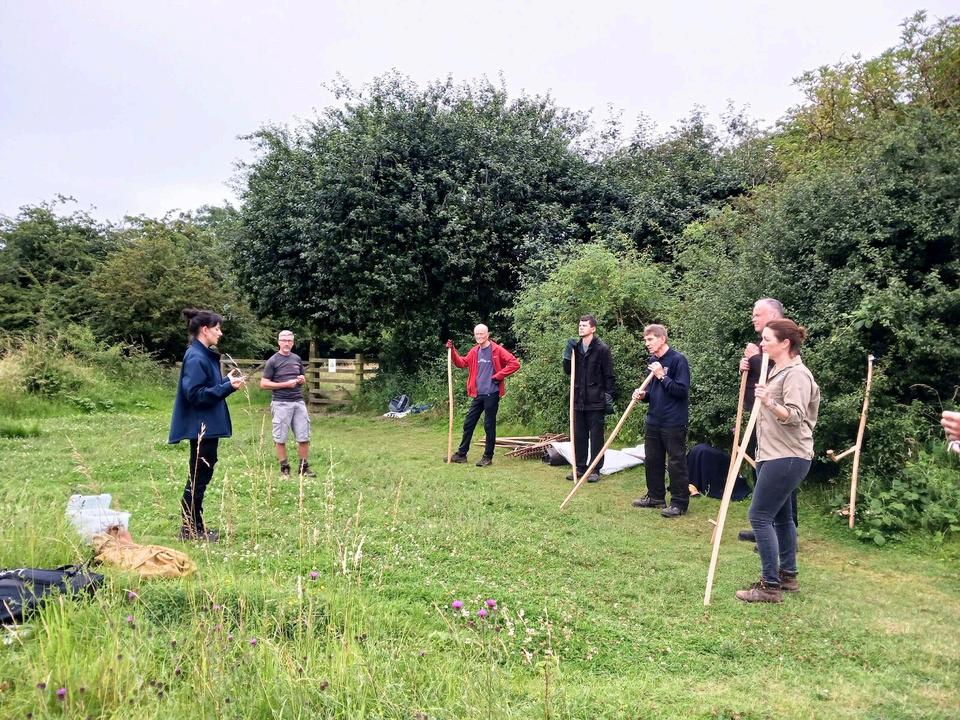
Juliette Colaço-Fournier - Assistant Reserves Officer
An update from the east reserves team
We were lucky enough to spend some of the summer carrying out grassland surveys on our reserves to help us get a better idea of the health of the sites, formally record the species we found and help shape our management plans and work calendar. Some of the highlights from our surveys and visits include:
saw-wort at Merry’s Meadows dropwort at Wymondham Rough chalk milkwort at Stonesby Quarry a beautiful array of colours from the agrimony, betony, meadow vetchling and adder’s tongue fern at Cribb’s Meadow a brassy long-horn moth (Nemophora metallica) at Bloody Oaks Quarry (very rare in Leicestershire and Rutland)

Our grasslands require careful management, a big part of which is mowing and raking them every year. As well as our usual mowing machinery, this year, thanks to a brilliant scything course led by Isabel, we have been able to add traditional scythes to our methods of mowing. We are still learning and improving our scything skills but luckily we have plenty of grasslands to mow and so will be getting lots and lots of practice!


Importantscythemaintenance-peening!




Belgrave Neighbourhood Cooperative Housing Association (BNCHA)
A massive thank you to Bob at Church View Nursery, Barkby, for their very generous donation of plants for our community garden. End of season, no good for sale, but still with plenty of life for our little space, we were straight over there after a heads up from our friends at Belgrave Library gardening group – it’s not what you know, it’s who you know! I took community volunteers along to choose what they would like for the garden and amongst the wonderful array of plants on offer, and a treasure trove of antiques that had me very distracted, we also enjoyed a little game of spot the sleepy doggy.

Another shout out to Cambridge and Counties Bank who, as part of their CSR programme are coming to the garden on an ad hoc basis to assist with some of the bigger jobs that need doing – a relationship I’m sure will continue to blossom with BNCHA.
As we continue to build relationships and shape the garden around community aspirations, we’re starting to explore hosting workshops from within BNCHA’s community garden. These will be alternative ways in which people can connect with each other, and nature, aside from traditional tending a garden which doesn’t appeal to everyone. With having developed relationships across the community we’re hoping to host outdoor yoga sessions, nature wellbeing sessions and forest school type activities, inspiring regular use of the garden for all the possible things!


BNCHA’s upcoming AGM has a focus around textiles in the community and, with a community garden display at the event, we’re working on a garden textile piece that we can hang as a contribution. Over the next few weeks, we’ll be exploring the Japanese technique of Hapa Zome –printing with plants and flowers. We’re using plants we’re growing in the garden to experiment and play with patterns and designs. Then BNCHA’s regular crafting group will add in some embroidery and embellishments, stitch them together then voila! An amazing wall hanging with contributions woven through from everyone linked to the garden in one way or another- made by the community for the community.
The artwork will be a wonderful reflection of the unique journey we’ve been on as a community over the last 18 months; from a space that no one knew existed, to a hub of growth, friendship, habitat creation and nature connection in the middle of Leicester city. Thank you to everyone who has been/is involved, it’s something to be really proud of.
If anyone would like to be involved in any way do reach out!

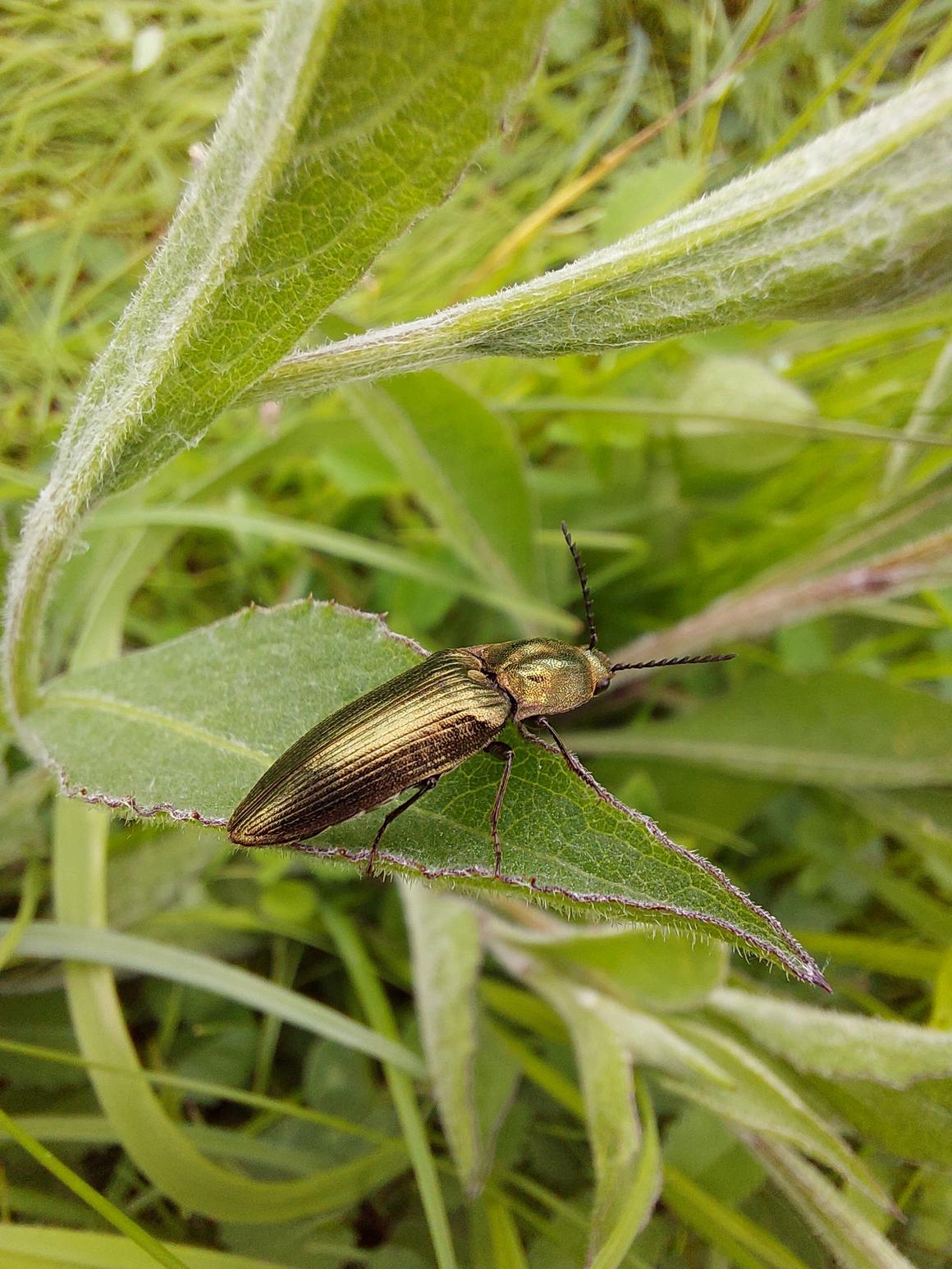

Isabel Raval - Charnwood Forest Regional Park Project and Surveys Officer
Since the start of this year’s late-arriving summer, we have made the most of the warmer months by packing them with events for the Charnwood Forest Wildlife Recording Project. In early summer we held a few woodland surveys to contribute towards the Ancient Woodland Inventory update. We then continued with our species identification training sessions, covering ferns, moth trapping, meadow botany, bat detecting and reptile surveying.

In amongst these training events, we have also started holding general recording field meetings around the Charnwood Forest Geopark. Locations recorded so far have been Billa Barra Nature Reserve, a private farm in Woodhouse Eaves, The Chase at Charnwood Lodge Nature Reserve, Windmill Hill, Beacon Hill Country Park, Hill Hole Nature Reserve, Buck Hill and Forest Rock Wood. These have been a pleasure to organise and be part of, so thank you to everyone who has attended. I have taken more photos of various types of faecal matter than I ever have before –does this make me a real naturalist?! Our meetings are all about getting out to new places around the Geopark with fellow enthusiasts and demonstrating that submitting wildlife records is a lot of fun and does not have to be daunting. If you would like to be kept updated on our field meetings and training events, please contact me on iraval@lrwt.org.uk to join the mailing list.
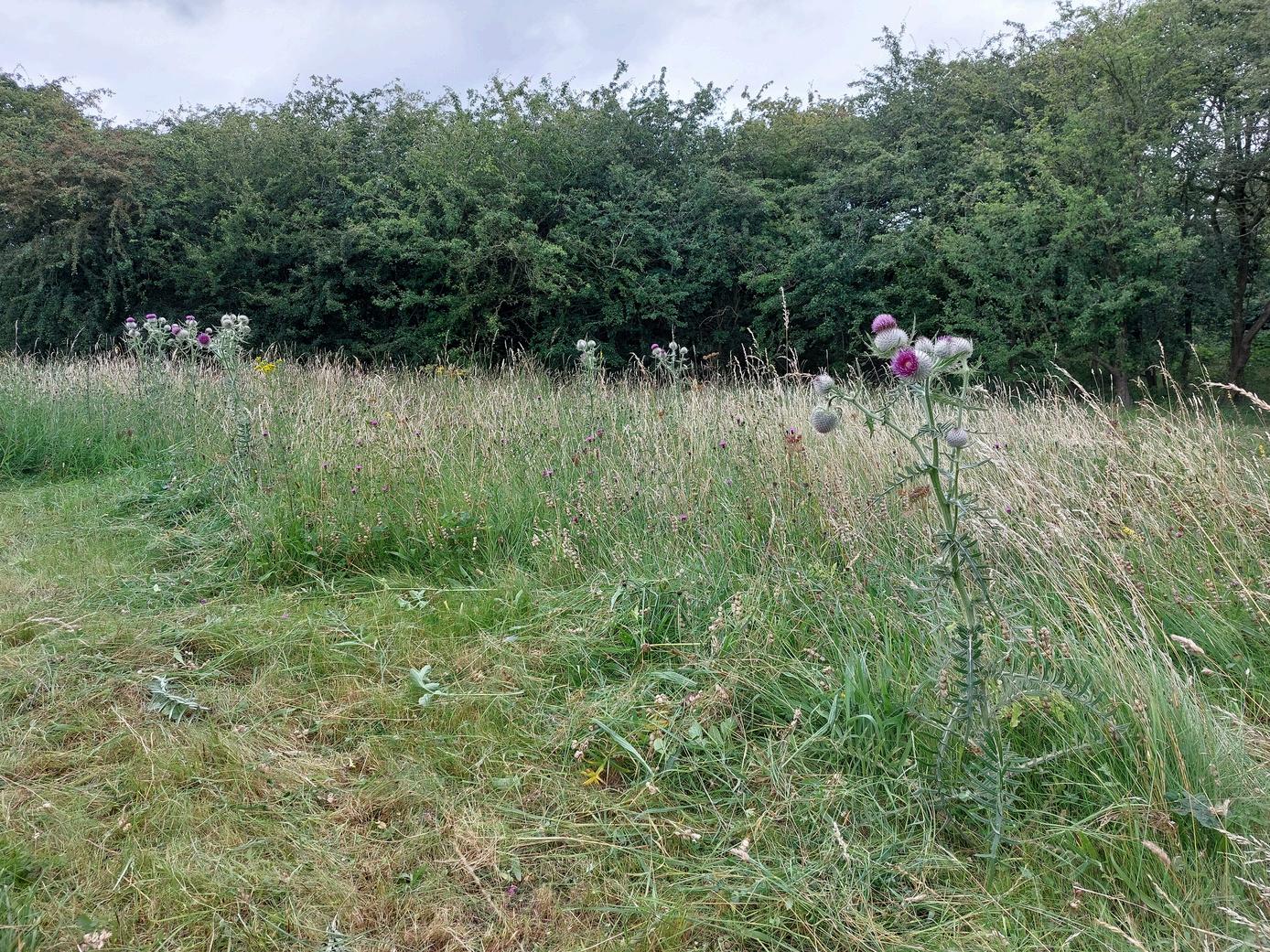
On a slightly different note, I am very happy to say that the scything legacy from our Grasslands Project lives on this year! In July and August, I had the pleasure of delivering some training to Sarah, Juliette and some of their volunteers over at Stonesby Quarry. The wonderful calcareous grassland there was not only a joy to look at but also to cut…though I did feel a bit guilty every time we decapitated a Woolly Thistle. We purposely left some areas of this and other late-flowering species uncut, like Field Scabious, Agrimony, and Lady’s Bedstraw. Back in Charnwood Forest, Andy has also been integrating scything into the volunteer days on his reserves, which I have been pleased to frequently attend.
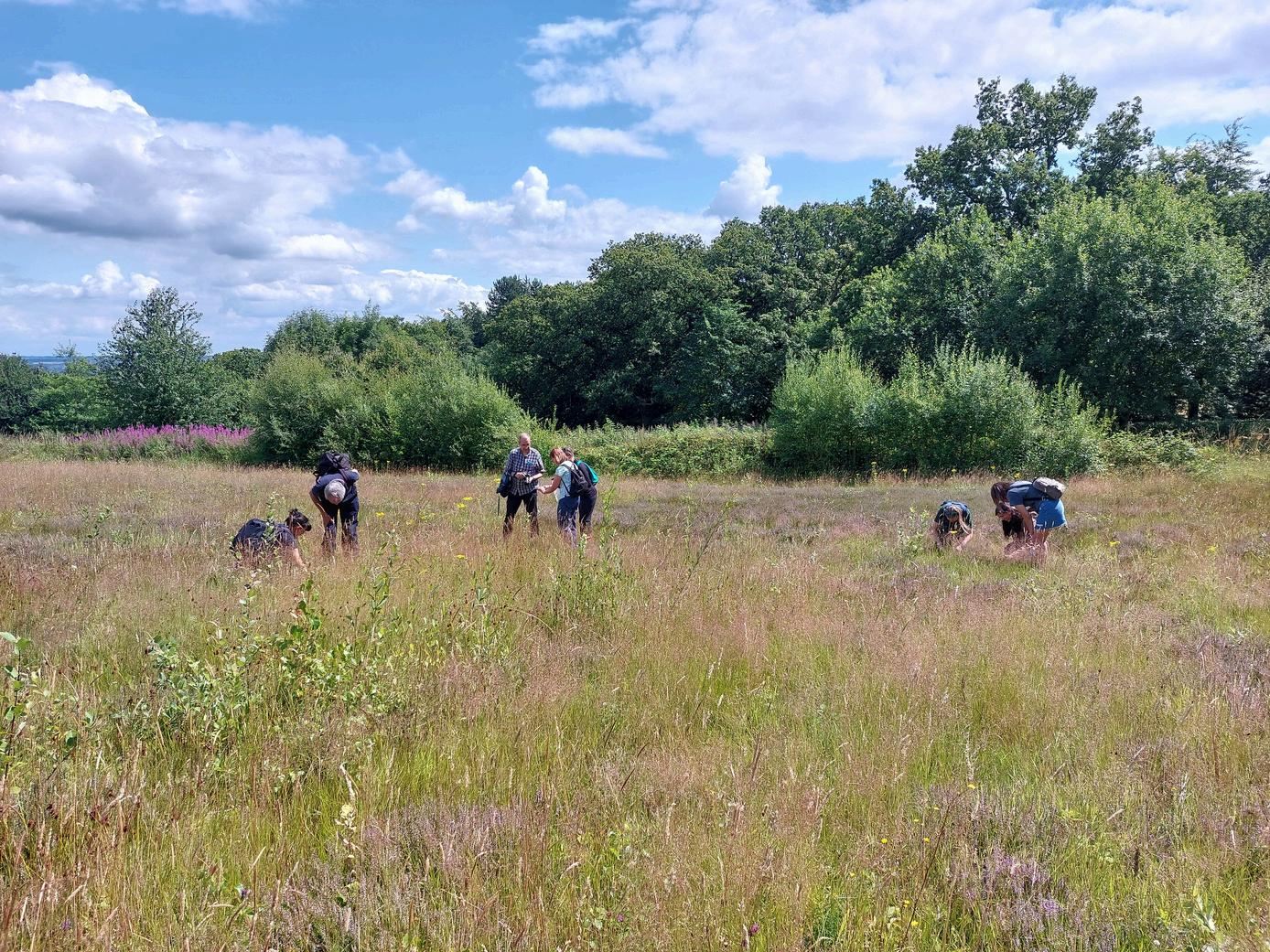
By the time this newsletter comes out, the butterfly survey season will be over. For six months of the year, I and our wonderful transect volunteers become accustomed to measuring progress through the season based on which butterflies can be spotted. It is a massive commitment for our volunteers to do these weekly counts for half the year, so I want to say a big thank you to all of you who take part. Who knows what we fill our time with for the other sixth months! Personally, I will require an adjustment period around the Autumn Equinox to mourn the end of summer and start appreciating the delights of the colder months.
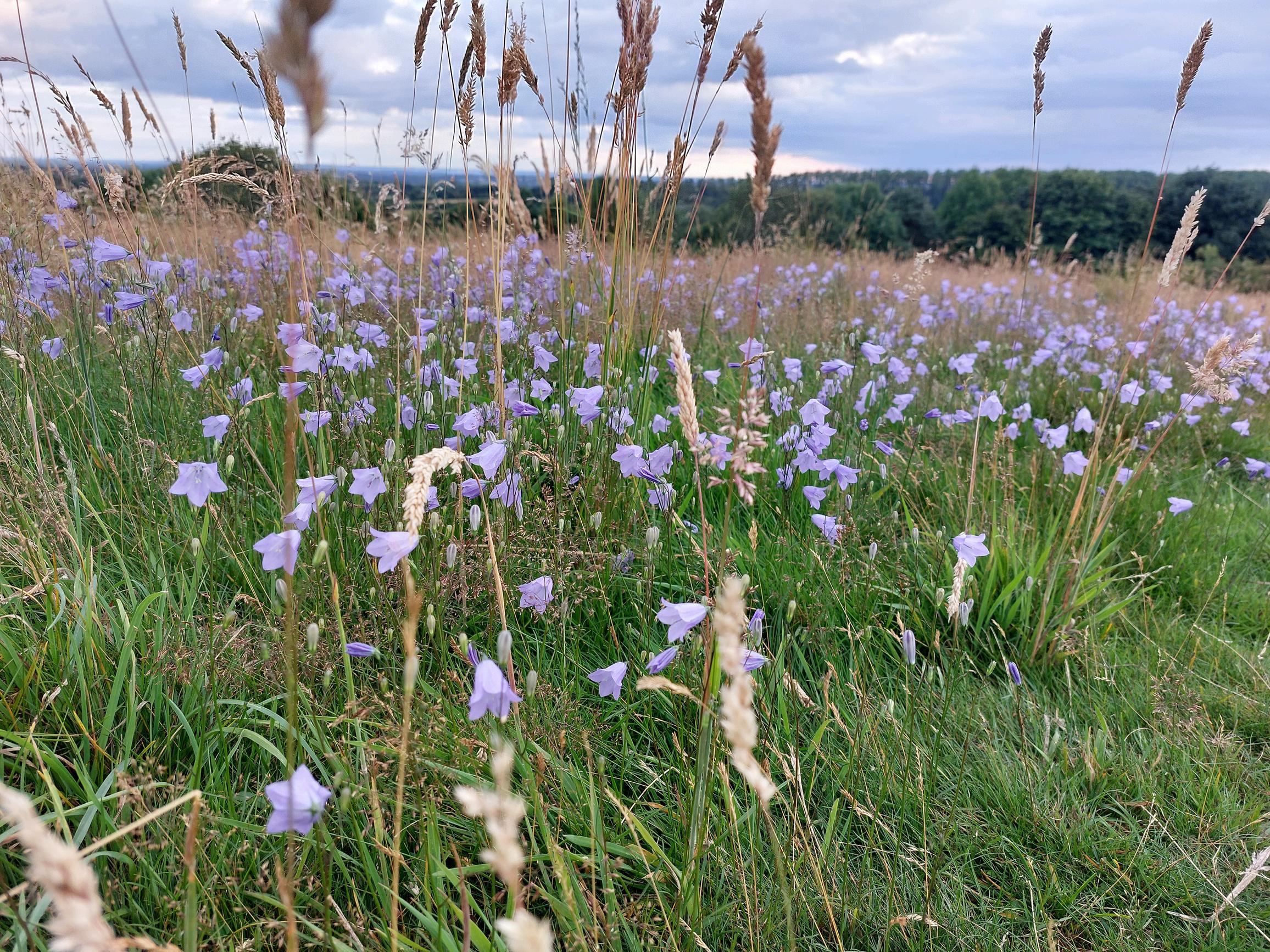

Matt Scase - Visitor Centre and Events Assistant
Greetings from a now much quieter Lyndon Visitor Centre. The end of the Osprey season was quickly upon us, but not before we got to witness some amazing sights. In my last update I talked about the fledging of our juvenile 1R0. Since then he continued to fly more, whilst still relying on his parents for fish. We were expecting him to leave on migration some time in mid August, but strong south-westerly winds kept him in Manton Bay for a bit longer.
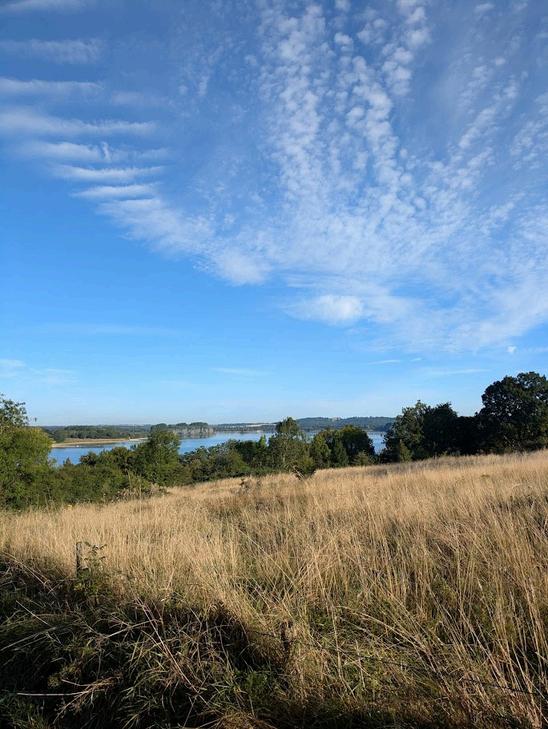
It was in this period that we had the most incredible Osprey sightings around the Reserve. It was a very good year for Osprey in central England with the final total from the nests around Rutland being 25 chicks from 11 nest sites. During August we got to see so many of these take flight and join us at Rutland Water. At one point we were looking out of the window at the Centre here and could see 5 circling above Lax Hill. The Osprey Cruises as well were a massive success, at times we were losing count of the number of Osprey we were seeing, not only in flight, but also fishing. It was a magical time and it has been such a pleasure to have been part of the project this year.


It wasn’t until the 29th August that 1R0 was last seen on the nest. Maya quickly followed, leaving on migration a day later, with 33(11) staying until the 2nd September. We still saw a few Osprey after this time, with a younger Male, ring number 359, intruding on the Manton Bay nest for about a week after 33(11) had left, as well as Scottish Osprey passing through on Migration. However, with the weather turning colder, and the days getting shorter, those sightings became less and less frequent. We now will have to wait until March next year, when we look to welcome the Osprey back to the shores of Rutland Water. If you are missing the Osprey action then you can watch our full highlight reel from the year on our YouTube channel: Rutland Osprey Project.
The departure of the Osprey also now means the closure of the Lyndon Visitor Centre, and we will now be closed to the public throughout the winter months. We will however be running a series of events during this time, as a way to keep people engaged in the work we are doing. These range from guided walks on the Reserve to craft afternoons in the centre. Take a look at all that is being offered, and we hope you will be able to join us for some (do please also share this far and wide): https://www.lrwt.org.uk/lyndon-naturereserve-events
Our marvellous information officer, George, has also been planning events that he is going to head up in the coming months. Those of you who have not met George in person will most likely have seen him on Countryfile, interviews with the news, or radio talks, and know how fantastic he is at sharing his knowledge. Perhaps the most exciting events coming up will be some Sunset Safari Cruises on the water here at Rutland. To find out more, and to book on, please visit: https://www.rootandwing.co.uk/events

Stay

